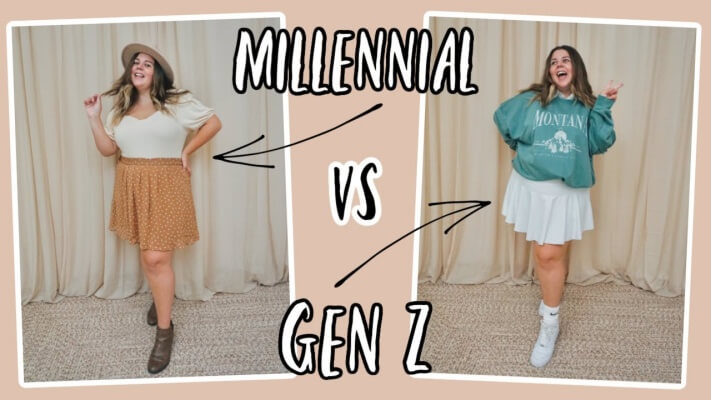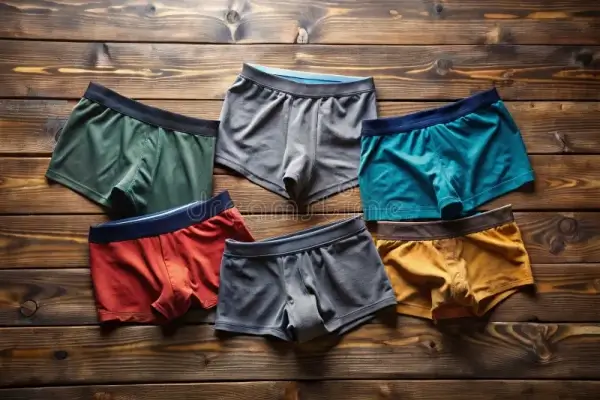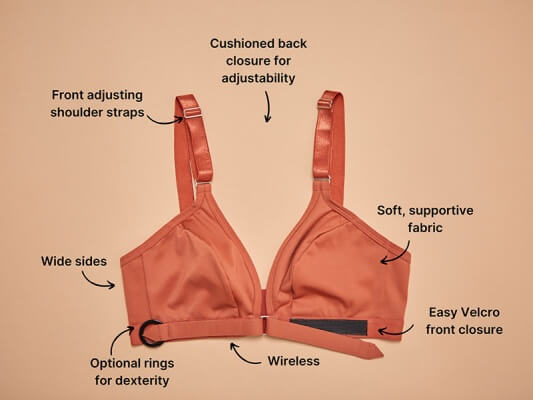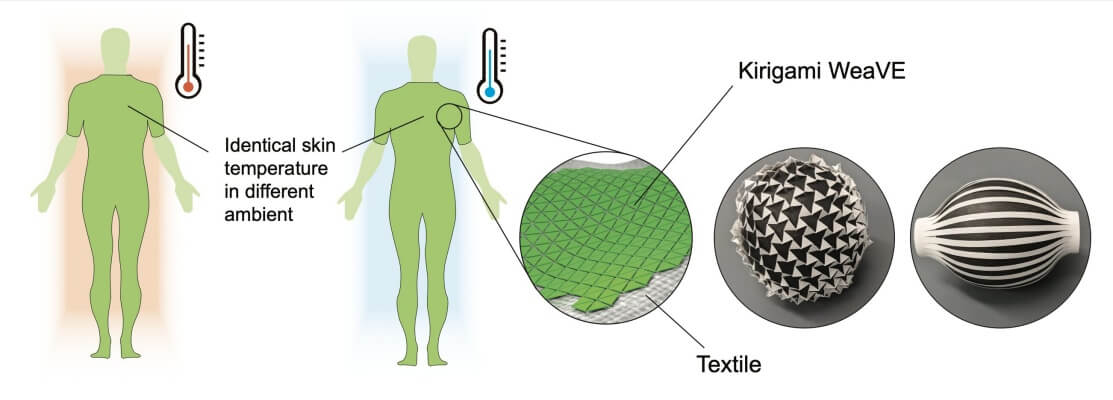Beyond the Bra: 3 Emerging Lingerie Opportunities Most Brands Are Missing in 2026?
You're focused on perfecting your next collection of women's bras and panties, competing in a crowded, saturated market. But while you're fighting for inches, the entire landscape is shifting, creating massive new "blue ocean" markets that most brands are completely ignoring.
While the global lingerie market is set to exceed $45 billion by 2026, the most explosive growth isn't where you think. The three most significant emerging opportunities are the rapidly expanding men's underwear market, the underserved adaptive lingerie category, and the nascent field of tech-integrated smart intimates.

The lingerie industry is no longer just about seduction or basic function; it's a dynamic reflection of profound cultural shifts. As a manufacturer on the front lines, I see the data in the orders we receive. The brands that are seeing exponential growth are the ones brave enough to look beyond the traditional. They understand the new consumer and the new definitions of comfort, wellness, and identity. At HAVING (China) Ltd., we are actively building the capabilities to serve these new frontiers. This isn't just an analysis; it's a map to the future of the intimate apparel industry.
What's Really Driving the Market's Growth Engine?
The lingerie market is growing, but why? It's not just population increase. A fundamental shift in consumer psychology is underway, creating a new set of demands that are reshaping product development and marketing.
The market's growth is primarily fueled by three powerful forces: the rise of the "self-care" and "body positivity" movements, a non-negotiable demand for high-performance comfort in everyday life, and the powerful influence of social media in diversifying beauty standards and creating niche communities.

For decades, the industry was driven by a single, often unrealistic, ideal of beauty. Today, that model is broken. I speak with founders every week who are building successful brands based on a completely different set of values. They see lingerie not as a tool for seduction, but as an act of self-love. This translates directly to the factory floor. We're receiving fewer requests for restrictive, purely aesthetic designs and more for garments that blend beauty with our "body-before-fabric" philosophy. The demand is for products that make the wearer feel good in their own skin, both physically and emotionally. Brands that fail to understand this fundamental psychological shift will quickly become irrelevant.
The New Consumer Mandates
| Growth Driver | What It Means for Product | What Smart Brands Are Doing |
|---|---|---|
| **Self-Care & Body Positivity** | A move away from "shaping" to "celebrating." Softer materials, less restrictive designs, and inclusive sizing are key. | Launching extended size ranges, using diverse models in marketing, and focusing on the emotional feeling of wearing the garment. |
| **High-Performance Comfort** | Consumers expect their lingerie to perform like activewear: moisture-wicking, breathable, seamless, and durable. | Investing in technical fabrics like high-grade microfiber and modal, and utilizing advanced construction like seamless knitting and bonding. |
| **Social Media Influence** | Trends are born and die faster. Niche aesthetics (e.g., cottagecore, Y2K) create demand for specific, small-batch collections. | Working with agile manufacturing partners who can offer smaller MOQs and faster turnaround times to capitalize on micro-trends. |
Who Is Your Customer in 2026?
The "average" lingerie customer no longer exists. A Gen Z shopper on TikTok and a Millennial mom shopping online have vastly different values, expectations, and paths to purchase. Are you trying to sell to everyone, and therefore connecting with no one?
The 2026 consumer is fragmented. Gen Z demands authenticity, sustainable proof, and TikTok-driven trends. Millennials prioritize value, comfort, and trusted online reviews. Brands must create targeted products and marketing strategies for these distinct profiles instead of a one-size-fits-all approach.

Understanding these consumer profiles is critical to our work as a manufacturing partner. When a brand tells me their target is "Gen Z," it immediately informs our material suggestions and design advice. We know this group responds to bold colors, novel textures, and, most importantly, a transparent supply chain story. For them, a GRS-certified fabric isn't a bonus; it's a baseline expectation. Conversely, when a client is targeting Millennials, our conversation shifts towards the durability of elastics, the softness of the modal fabric for their loungewear, and ensuring the perfect fit for their everyday bras and panties. As your manufacturing partner, our role is to help you translate these consumer insights into a tangible, successful product.
A Tale of Two Generations
- Gen Z (Born 1997-2012): Digital natives who discover brands on TikTok and Instagram. They value self-expression, gender fluidity, and radical transparency. They are highly skeptical of traditional advertising and are drawn to brands that are authentic, inclusive, and have a strong point of view on social and environmental issues.
- Millennials (Born 1981-1996): Now in their peak earning and family-building years. They are savvy online shoppers who rely on reviews and peer recommendations. Comfort, quality, and value are their primary drivers. They are loyal to brands that make their busy lives easier and more comfortable, from functional shapewear to easy-care sleepwear.
Opportunity #1: Is Men's Underwear the New "Secret" Growth Market?
The women's lingerie market is fierce and competitive. But what about the other half of the population? For decades, the men's underwear category was an afterthought, with little innovation or excitement.
Yes. The men's underwear market is undergoing a massive revolution, projected to grow significantly faster than the women's market. Modern male consumers are now demanding the same things female consumers are: high-performance fabrics, superior comfort, and styles that reflect their personal identity.

This is one of the most exciting shifts we're seeing. The old three-pack of cotton briefs is dead. We are now producing sophisticated men's underwear using advanced materials like modal for softness, and microfiber for its moisture-wicking properties. The designs are more considered, with features like ergonomic pouches, anti-chafing seams, and branded waistbands. The brands succeeding in this space are treating men's underwear with the same seriousness and technical expertise as women's lingerie. For brands looking for a less-saturated market with enormous growth potential and brand loyalty, this is a massive opportunity.
Opportunity #2: Are You Serving Every Body's Needs?
The conversation around inclusivity has pushed brands to extend their size ranges. But what about inclusivity for different abilities and life stages?
Adaptive lingerie—garments designed for people with disabilities, chronic illness, or post-surgical needs—is one of the most underserved and meaningful markets. This is a "blue ocean" opportunity for brands to build deep loyalty by providing innovative, problem-solving products.

This goes far beyond standard sizing. We're talking about tangible innovation. Think bras with magnetic front-closures for individuals with arthritis, panties designed for wheelchair users, or post-mastectomy bras with integrated pockets for prostheses. As part of our comprehensive OEM/ODM services, we have the technical capability to develop these specialized products. The brands that enter this space are not just selling a product; they are providing dignity, confidence, and independence. The customer loyalty in this segment is fierce because so few brands are genuinely catering to their needs.
Opportunity #3: Can Lingerie Do More Than Just Support?
For its entire history, lingerie has been a passive garment. But we now live in a world of wearable technology. What if lingerie could do more?
While still nascent, tech-integrated or "smart" lingerie is the next frontier. The most immediate and commercially viable opportunities lie in using smart fabrics to provide tangible wellness benefits, such as temperature regulation, skin hydration, and enhanced athletic performance.

This is the cutting edge. While garments with embedded sensors are still largely in the prototype stage, the innovation in smart fabrics is happening right now. We are already sourcing and working with materials that offer real, science-backed benefits. For example, yarns infused with jade particles can create a cooling sensation on the skin, perfect for sleepwear or for women experiencing menopause. Other fabrics use far-infrared technology to reflect the body's heat, potentially improving circulation. Brands that can successfully integrate these wellness technologies into their garments will create a powerful new value proposition that goes far beyond simple aesthetics or comfort.
Conclusion
The lingerie market of 2026 is less about tradition and more about transformation. The greatest opportunities lie in the markets that have been overlooked: men's underwear, adaptive needs, and tech-enhanced wellness.
Frequently Asked Questions (FAQ)
1. What is the projected size of the global lingerie market in 2026?
While figures vary slightly between market research firms, most projections indicate the market will grow significantly. For example, some reports from 2024-2025 have estimated the market to reach or exceed $45 billion USD by 2026, with a healthy compound annual growth rate (CAGR).
2. Which geographical region is the fastest-growing market for lingerie?
The Asia-Pacific region is consistently cited as the fastest-growing market. This is driven by rising disposable incomes, increasing urbanization, a growing awareness of global fashion trends, and a large, young population.
3. What is the impact of sustainability on the lingerie market?
Sustainability has become a major purchasing driver. Consumers, particularly Gen Z and Millennials, are increasingly demanding transparency and eco-friendly materials. Brands with strong sustainability credentials, such as using GRS-certified recycled materials or organic cotton, can command greater loyalty and a premium price.
4. How is the plus-size lingerie market evolving?
The plus-size segment is one of the most dynamic and important growth areas. It's moving beyond just offering larger sizes to a more nuanced approach, focusing on better fit, superior technical support for larger busts, and fashionable, desirable designs, rather than just basic, functional options.
